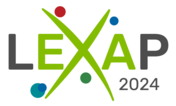Speaker
Description
The Mu2e experiment at Fermilab aims to observe coherent neutrinoless conversion of a muon to an electron in the field of an aluminum nucleus, with a sensitivity improvement of 10,000 times over current limits.
The Mu2e Trigger and Data Acquisition System (TDAQ) uses \emph{otsdaq} framework as the online Data Acquisition System (DAQ) solution.
Developed at Fermilab, \emph{otsdaq} integrates several framework components, an \emph{artdaq} based DAQ, an \emph{art} based event processing, and an EPICS-based detector control system (DCS), and provides a uniform multi-user interface to its components through a web browser.
The Mu2e tracker and calorimeter data streams are processed by a one-level software trigger implemented within the \emph{art} framework.
Events accepted by the trigger have their data combined, post-trigger, with the separately read-out data from the Mu2e Cosmic Ray Veto system.
The Mu2e DCS is built on EPICS (Experimental Physics and Industrial Control System), an open-source platform for monitoring, controlling, alarming, and archiving.
A prototype of the TDAQ and DCS systems has been built and tested over the last three years at Fermilab's Feynman Computing Center. Now, the production system installation is underway.
This report covers our project's development progress, especially the web-based user interface, and slow control implementation.
